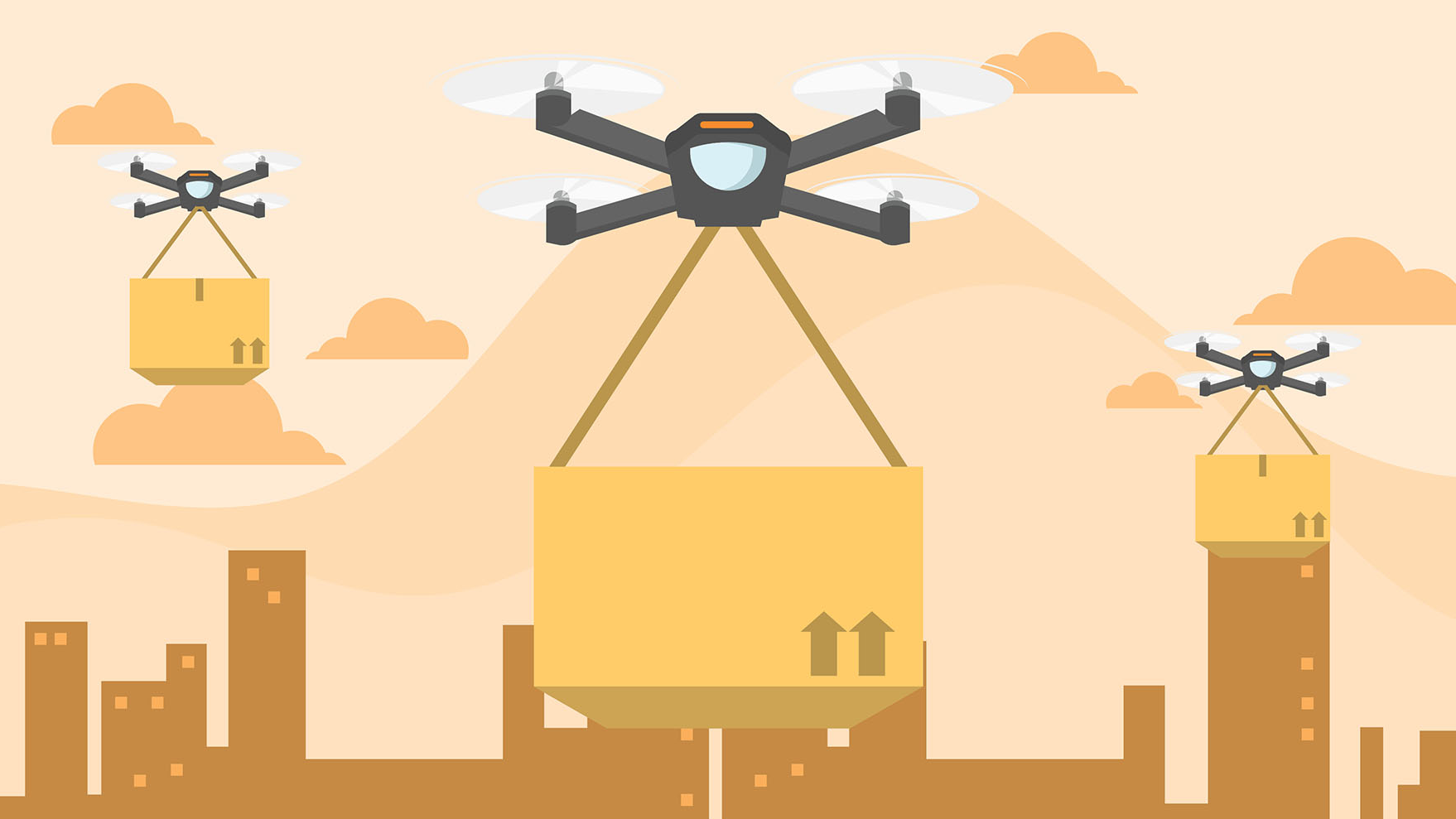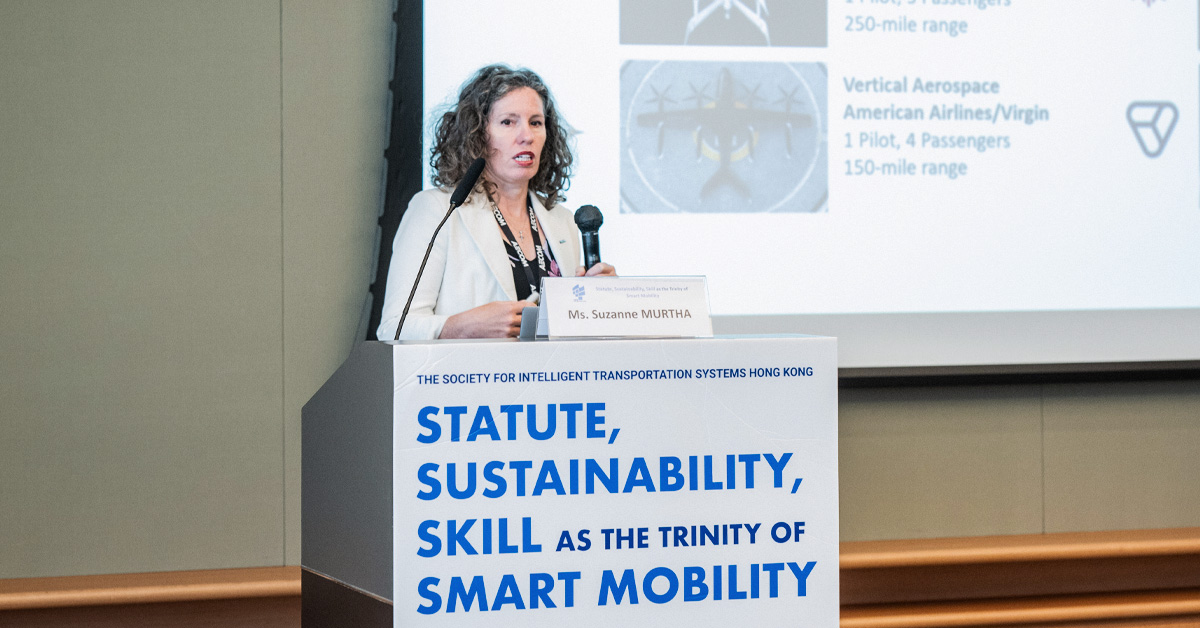Hong Kong is striving to get the low-altitude economy off the ground by building its technology prowess and capitalizing on the city’s position in the Greater Bay Area. Liu Yifan reports from Hong Kong.

A captivating show featuring about 1,000 drones fascinated spectators on May 25 on both sides of Hong Kong’s Victoria Harbour as the unmanned aerial vehicles flew above the water, creating motifs and characters of the earless robotic cat Doraemon and his friends.
It was the world’s first drone show for the popular manga character, set against the spectacular nighttime of the “fragrant harbor”.
If the extravaganza is anything to go by, Hong Kong will be creating profits in the sky by boosting tourism and following the motherland’s lead in lifting the nascent low-altitude economy to new heights. It’s an integrated form of economy manifesting in the development of related fields concerning flying activities by manned and unmanned civil aircraft, generally, within an air space of below 1,000 meters in altitude and extending to not more than 3,000 meters.
Hong Kong must keep abreast of trends and dynamics in industries domestically and internationally, and not miss out on new opportunities.”
Tan Yueheng, lawmaker, chairman of BOCOM International Holdings Co Ltd
“Low-altitude activities are now widely practiced in many fields in Hong Kong and are being integrated with various socio-economic activities,” Secretary for Transport and Logistics Lam Sai-hung told the Legislative Council earlier this year.
READ MORE: Shenzhen goes above and under
Government departments and private organizations in the special administrative region have been using small unmanned aircraft (SUA) in a growing range of areas, including the development of three-dimensional digital maps, search and rescue operations, aerial filming, drone shows, land surveys and utility inspections.
As the first step in regulating such activities with a risk-based approach, the Small Unmanned Aircraft Order came into effect in June 2022. As of February, the Civil Aviation Department had issued permits to nearly 100 companies or organizations to operate SUA, most of which involve surveying and aerial photography.

For the Guangdong-Hong Kong-Macao Greater Bay Area (GBA), the outline development plan calls for further reforms in managing low-altitude airspace, and expediting the development of general aviation, as well as the steady promotion of cross-boundary helicopter services.
“Subject to compliance with the relevant immigration and customs clearance and quarantine arrangements, the HKSAR government will continue to proactively explore avenues for developing cross-boundary commercial helicopter services with the mainland to strengthen air traffic connectivity within the GBA,” Lam said.
Lawmaker Tan Yueheng says the low-altitude economy is not just about a new industry track for national development and Hong Kong’s drive to be an innovation and technology center. It’s also a test for the SAR government in growing industries, policy responsiveness, and decision-making capabilities.
“The low-altitude economy is a new frontier for global industrial development. As an international city set to build up its technology sector, Hong Kong must keep abreast of trends and dynamics in industries domestically and internationally, and not miss out on new opportunities,” he says.
Global investment bank Morgan Stanley estimates that the global market for the advanced air mobility business could reach $1 trillion by 2040 and skyrocket to $9 trillion by 2050.
According to the Guangdong authorities, the province’s low-altitude economy is forecast to exceed 300 billion yuan ($41.4 billion) by 2026.
Seize the chance
Hong Kong’s location within the 11-city GBA, along with its strengths in financing capacity, application scenarios, scientific research capabilities, and professional cultivation, demand early development and deployment of the low-altitude economy, says Tan, who is also chairman of BOCOM International Holdings Co Ltd.
Chief Executive John Lee Ka-chiu, in his 2023 Policy Address, stressed Hong Kong’s goal to become a global innovation and technology hub and promote the development of 5G technology.
Low-altitude economy applications, such as aerial tourism, will allow greater access across the city and contribute to the growth of that market.”
Suzanne Murtha, vice-president of advanced mobility, payment systems, and automation at AECOM
Beijing-based e-commerce giant Meituan has become the mainland’s biggest operator of commercial delivery drones. “The low-altitude economy, primarily driven by the application of drones, is a perfect intersection of these two strategies,” says a spokesperson for Meituan Unmanned Aircraft System, which manages the group’s drone food delivery business. “The research, development, and manufacturing of drone systems have utilized a significant amount of technology, such as artificial intelligence, big data, the internet of things, and new materials.”
The low-altitude economy industry chain is highly extendable, capable of setting up research centers and attracting scientific and technological professionals. It can create new consumer scenarios, and corresponding infrastructure construction can stimulate effective investment and promote the transformation of airspace from a natural to an economic resource.
Suzanne Murtha, vice-president of advanced mobility, payment systems, and automation at American infrastructure consulting firm AECOM, says cultivating a low-altitude economy can enhance interconnectivity within the GBA and support the growth of economic activities in Hong Kong.
“Low-altitude economy applications, such as aerial tourism, will allow greater access across the city and contribute to the growth of that market,” she says. “The use of aerial taxis will shorten travel time and alleviate road traffic, improving overall safety. This will result in reduced costs associated with traffic congestion, accidents, and lengthy time for travel.” By doing so, it will help to improve connectivity among cities and outlying islands and rural areas in Hong Kong and, more importantly, allow closer connections between the downtown areas and the Northern Metropolis.

The Northern Metropolis, announced in the government’s 2021 Policy Address, is adjacent to Hong Kong’s boundary with the mainland and occupies a total land area of about 300 square kilometers. With innovation and technology as a growth pillar, the SAR government aims to make the project, which is expected to take 20 years to complete, a new development engine for the city and alleviate the chronic housing shortage.
However, there are still some policy limitations due to the multidepartmental management relating to the low-altitude economy’s development and the operational deployment of drones.
Meituan says the permits currently issued by Hong Kong’s Civil Aviation Department do not cover the Beyond Visual Line of Sight operations, which refers to the operation of unmanned aerial vehicles at distances where the operator is unable to observe the aircraft with the naked eye. Thus, the restriction hinders routine commercial implementation of drone delivery services.
As a result, it is recommended that an interdepartmental leadership team be formed to collaborate with the academic and industrial sectors to jointly develop the low-altitude economy.
Murtha notes that resistance from district councilors, developers, landowners and citizens may be encountered regarding electric vertical takeoff and landing aircraft, and drones flying over them, given safety and privacy concerns. It will also take more time to see growth in demand for low-altitude economy applications.
There is also a challenge in infrastructure development as landing site locations for electric vertical takeoff and landing (eVTOL)aircraft have to be carefully considered in terms of convenience, inter-modal connections, and environmental issues, such as noise pollution and their effects on birds, says Murtha. Like electric vehicles, charging eVTOLs requires a significant amount of power, and vertiport locations may need upgraded power infrastructure.
To help Hong Kong realize its ambitions, Tan believes a platform for investment and financing matchmaking for low-altitude economy-related industries should be established. By optimizing support and the environment for startups offered by venture capital, commercial and investment banks, and the Hong Kong Stock Exchange, it could attract companies in the low-altitude economy industry chain to seek investment, financing or secondary listings in the SAR.
Promote cooperation
Hong Kong should cooperate with other cities in the GBA to explore the pilot rules, management and supervision of cross-boundary operations of low-altitude aircraft in order to create a demonstration zone for cross-boundary operation of low-altitude aircraft, Tan says.
Shenzhen is moving rapidly ahead in forging a low-altitude economy. The city’s municipal government issued the Implementation Plan for Innovative Development of Low-Altitude Economy Industries (2022-2025) in December 2022. Last year, it officially initiated the first local industry-related legislation — Regulation of the Shenzhen Special Economic Zone on Promoting the Low Altitude Economy Industry — which has attracted low-altitude economy enterprises, such as Meituan and delivery service provider SF Express, as well as German aerospace company Lilium, to begin operations.
Meituan’s drone operations have been under research and development since 2017 and started operations in Shenzhen in 2021. Currently, the company operates 28 regular routes, providing delivery services covering scenarios such as offices, scenic areas, municipal parks, medical facilities and campuses, and has accumulated more than 250,000 orders so far.
ALSO READ: Guangdong steps up for low-altitude upper hand
Legislator Edward Lau Kwok-fan of the Democratic Alliance for the Betterment and Progress of Hong Kong suggests the city explore areas for expanding the application of low-altitude aircraft, including air cabs, tourism and sightseeing, as well as logistics and distribution in the planning and development of the Northern Metropolis.
Consideration should be given to conducting technology research and manufacturing for the low-altitude economy in the northern part of the New Territories, encompassing the production of small aircraft, helicopters and drones, he said.
Lau also suggests the authorities introduce educational programs, such as pilot and technical personnel training.
To unleash the potential of the low-altitude economy, there should be planning for coordination and top-level design, and the government should promote cross-departmental collaboration, says another DAB lawmaker Elizabeth Quat Pei-fan.
“The SAR government has yet to start comprehensive planning for the low-altitude economy. This is important for the future development of Hong Kong and the GBA.”
Contact the writer at evanliu@chinadailyhk.com


